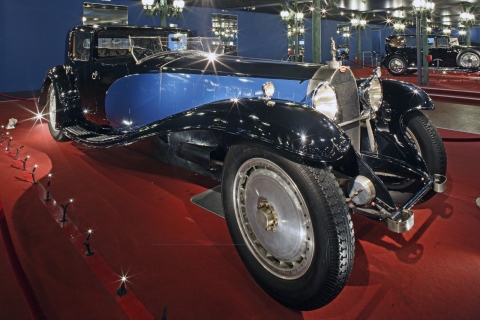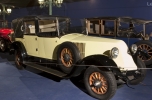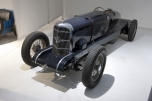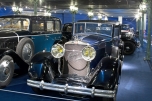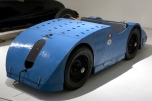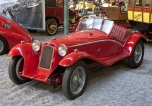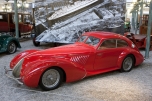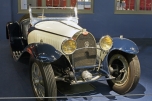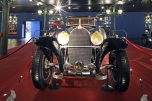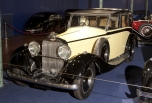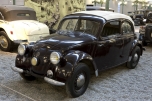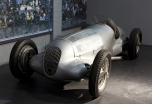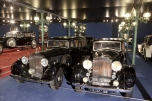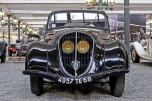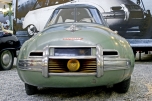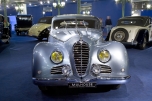Cars from 1920 to 1950 - The golden age of the car
Bugatti Royale Type 41
1929
Code 0911
Body style: coupé chauffeur
If there was ever a motorcar that deserved to be referred to as a masterpiece, that car is the Bugatti Royale. Its vital statistics are very impressive, with an 8-cylinder inline engine of nearly 13 litres, outputting up to 300 horsepower. This power enabled the three-tonnes of automobile to reach top speeds of 200 kph (125 mph), with fuel consumption of around 50 litres for 100 km (4.7 mpg). But this was nothing, compared to the price of the world’s most expensive car.
This car, the “Coupé Napoleon” was Ettore Bugatti’s personal runaround. It was owned by the Bugatti factory until it was bought by Fritz Schlumpf. The body was designed by Jean Bugatti, son of Ettore, when he was only 20. It was built on the first definitive “Royale” chassis, with the same numbering (41100) as the 1927 prototype that was destroyed in an accident. The balance and smoothness of this 6-metre car is remarkable - an immense coupé that showcases all the aesthetic principles applied by Jean Bugatti to the marque’s later models. The harmonious overall design, with its clear lines and curves, somehow seems to mask the unusually large size of the car. The shape of the one-piece front wings are in themselves a work of art. The chassis frame is concealed by the flanges of the front wings, the polished tubular axle has a very clean styling and the transparent portions in the roof of the rear compartment are all features that make this what is widely considered to be the most beautiful classic car of all time.
For Ettore Bugatti, the Royale was to be the pinnacle, a world-beater in terms of power, quality and reputation. However, although it was built for kings, this heavyweight (2900 kg) did not receive as warm a welcome as expected. Only six models were ever produced, and this failure jeopardised the future of the company, which was saved only through the reuse of engines in an “autorail” (on display at the Cité du Train in Mulhouse), which is thought to be the forerunner of the TGV high speed train.

